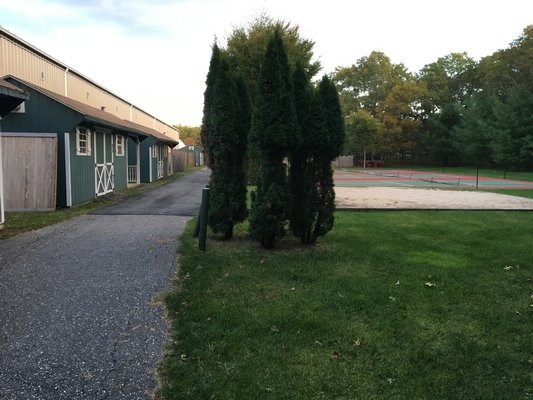
The East Hampton Town Planning Board has finished its review of the proposed bowling alley, sports bar and miniature golf facility at East Hampton Indoor Tennis in Wainscott and has asked the Suffolk County Planning Commission to offer its assessment of the project before the final approvals are issued.
If the county signs off on the project, as can be expected, the board could issue its approvals of the site plans shortly thereafter.
Planning Board chairman Reed Jones voiced surprise at last week’s board meeting that not a single comment, either for or against the project, was brought by members of the public during the public hearing phase of the board’s review last month.
Though the hearing record was officially closed, the board’s members and environmental advocate Kevin McAllister did have a brief discussion about more advanced septic treatment systems being mandated for new development projects like the bowling alley in the near future.
“Regardless of capacity, over-engineered systems are not treating that nitrogen base,” Mr. McAllister said, harking to one of the claims consultants for the bowling alley applicant, Scott Rubenstein, had made when Planning Board members asked if the septics for the new facility could be upgraded.
The septic system, the applicant’s advocates said, was larger than the facility, which would never been at full capacity occupancy all at one time. Board member Kathleen Cunningham had asked if the applicant would consider a septic system that reduces nitrogen in the facility’s waste effluent.
Mr. McAllister, the former Peconic BayKeeper and president of the water quality advocacy group Defend H20, noted that county standards, which the applicants said the plans for the facility meet, do not require any nitrogen reduction and can allow for nitrogen discharges many times the levels deemed to be safe for surface waters. Newer septic treatment systems can reduce nitrogen amounts to low as two or three parts per million, but Planning Board members said they could not demand such systems be installed until laws are changed.
“The Town Board is the one that has to enact legislation that we can act on,” Ian Calder-Piedmonte said.
This week the East Hampton Town Board introduced a bill that would require nitrogen-reduction septic systems on all large development projects within the town’s watershed overlay districts.
The project in Wainscott would expand on the existing East Hampton Indoor Tennis facilities to create a 10-lane bowling alley, an indoor-outdoor sports bar and restaurant with nearly 200 seats, a miniature golf course and a new parking lot with 100 parking spaces.